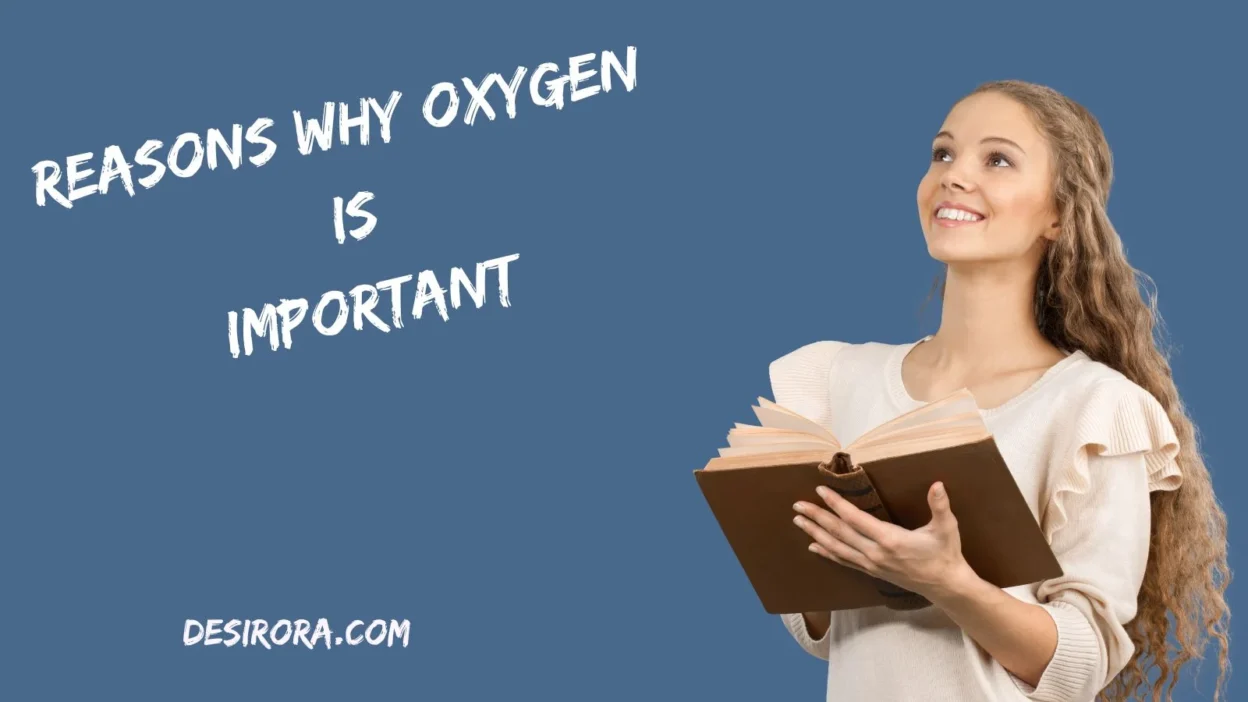Take a deep breath. Feels good, right? That invisible, tasteless, and odorless gas filling your lungs is oxygen (O₂)—the element that makes life possible on Earth. Without it, humans, animals, and most living organisms wouldn’t survive for more than a few minutes. It’s not just something we breathe; oxygen plays countless roles in our cells, environment, industry, and medicine.
From powering your brain to protecting Earth from harmful radiation, oxygen is truly indispensable. Let’s explore the many reasons why oxygen is important—for life, health, industry, and the planet.
Oxygen and the Human Body
Oxygen is everywhere in your body. In fact:
- Oxygen makes up about 65% of the human body’s mass (mostly as water molecules).
- When you inhale, oxygen enters your lungs, passes through tiny sacs called alveoli, and moves into your bloodstream.
- Hemoglobin in your red blood cells binds to oxygen and delivers it to organs and tissues.
Think of oxygen as the fuel your body uses to run smoothly. Without a constant supply, cells begin to fail, organs shut down, and death occurs within minutes.
Here’s a quick look at what oxygen does inside the human body:
| Function | How Oxygen Helps |
| Breathing & Energy | Allows cells to extract energy from food through cellular respiration. |
| Brain Function | Supports thinking, memory, focus, and nervous system regulation. |
| Immunity | Powers immune cells to fight off bacteria, fungi, and viruses. |
| Healing & Repair | Helps wounds heal and tissues regenerate. |
| Detoxification | Assists liver enzymes in breaking down toxins and drugs. |
| Metabolism | Burns glucose, fats, and proteins efficiently. |
Cellular Respiration: How Oxygen Powers Life
At the core of life lies cellular respiration. This is the process where your cells convert food (glucose) into usable energy (ATP). Oxygen acts as the final electron acceptor in the mitochondrial electron transport chain, allowing for efficient production of ATP.
Without oxygen, your cells would rely on anaerobic respiration (like certain bacteria do). But that only produces a tiny fraction of energy and generates lactic acid, leading to fatigue.
In other words:
- With oxygen → cells produce 36–38 ATP molecules per glucose.
- Without oxygen → only 2 ATP molecules per glucose.
That’s why breathing deeply during exercise gives you more stamina—your cells are literally making more energy.
ATP – The Energy Currency of Cells
Think of ATP (adenosine triphosphate) as the money your body spends on every activity: walking, thinking, digesting food, even blinking. Oxygen ensures you have a steady “income” of ATP.
Without enough oxygen, ATP production slows down, and the body struggles to power even basic functions. That’s why oxygen deprivation (hypoxia) quickly leads to dizziness, confusion, and eventually loss of consciousness.
💡 Fun fact: An average adult uses about 600 liters of oxygen per day, which supports burning roughly 0.1 calories per minute at rest.
Oxygen’s Role in the Brain and Vital Organs
Your brain consumes about 20% of the body’s oxygen supply. No wonder when oxygen is cut off, brain cells begin dying within 5 minutes.
Effects of oxygen deprivation on the brain:
- Short-term → confusion, headache, blurred vision.
- Long-term → permanent brain damage, memory loss, or death.
Other vital organs like the heart, kidneys, and liver also rely on a continuous oxygen supply. Oxygen keeps the circulatory system pumping, maintains cell function, and ensures every organ stays alive and active.
Oxygen in Growth, Healing, and Immunity
Oxygen is not just for energy—it’s also for recovery.
- Wounds heal faster when tissues receive plenty of oxygen.
- Oxygen activates white blood cells to kill pathogens.
- Oxygen therapy is used to support patients with chronic infections, lung conditions, or severe injuries.
Doctors often use hyperbaric oxygen therapy (HBOT)—where patients breathe pure oxygen at high pressure—to speed up healing in burns, wounds, carbon monoxide poisoning, and certain infections.
As the saying goes, “oxygen heals from the inside out.”
Oxygen and the Environment: The Bigger Picture
Oxygen isn’t just about humans—it’s part of the entire Earth’s ecosystem.
- Plants release oxygen as a by-product of photosynthesis.
- Animals (including humans) consume oxygen and release carbon dioxide.
- This balance keeps the oxygen cycle alive.
If oxygen levels dropped significantly, most life forms would collapse. Thankfully, Earth’s flora, oceans, and atmosphere maintain this delicate balance.
Photosynthesis and the Oxygen Cycle
Here’s how it works:
- Plants, algae, and cyanobacteria absorb carbon dioxide and water.
- With the help of sunlight and chlorophyll, they convert these into glucose and oxygen.
- This oxygen is then released into the atmosphere for animals and humans to breathe.
This process not only sustains us but also keeps atmospheric oxygen at about 21%.
💡 Did you know? About 70% of Earth’s oxygen comes from oceanic phytoplankton—tiny plant-like organisms floating in seawater.
Ozone Layer: Nature’s Protective Shield
Oxygen doesn’t only keep us alive—it also protects life from harm.
- In the stratosphere, oxygen molecules (O₂) can form ozone (O₃).
- The ozone layer absorbs a large portion of the sun’s harmful ultraviolet (UV) radiation.
- Without it, life on Earth would be exposed to dangerous levels of radiation, increasing risks of skin cancer, cataracts, and ecosystem damage.
So oxygen helps twice: one form (O₂) keeps us breathing, another (O₃) shields us from the sun.
Industrial Uses of Oxygen
Oxygen isn’t just about biology—it’s also a major player in industry and technology.
Some industrial uses include:
- Steel manufacturing – Oxygen “blows” impurities out of molten iron.
- Chemical industry – Used in the production of ethylene oxide, methanol, and other compounds.
- Waste incineration – Helps burn waste at higher temperatures.
- Rocket fuel (LOX) – Liquid oxygen powers spacecraft.
- Diving & submarines – Provides breathable air in closed environments.
Oxygen truly fuels modern civilization.
Medical and Therapeutic Importance of Oxygen
In healthcare, oxygen is considered a life-saving drug. Doctors prescribe supplemental oxygen for conditions like:
- COPD (Chronic Obstructive Pulmonary Disease)
- Pneumonia
- Heart failure
- COVID-19 & respiratory distress
- Sleep apnea
Different delivery systems are used: nasal cannulas, face masks, oxygen concentrators, compressed cylinders, and even portable devices for home use.
Oxygen isn’t just a treatment—it’s often the difference between life and death.
Oxygen in Aerospace, Diving, and Extreme Environments
When humans travel beyond Earth or under the sea, oxygen travels with us.
- Astronauts breathe stored liquid oxygen (LOX) in space programs.
- Scuba divers carry oxygen tanks to survive underwater.
- High-altitude climbers rely on oxygen to fight altitude sickness.
These extreme environments show how oxygen is the ultimate survival tool.
Oxygen Safety: Risks and Precautions
While oxygen saves lives, too much can be harmful.
- High oxygen concentrations can damage lungs, cause seizures, or overwhelm the body.
- Oxygen is highly flammable—it fuels fires and explosions if not handled carefully.
- Hospitals, nursing homes, and households with oxygen tanks follow strict safety measures to prevent accidents.
Examples of precautions:
- Keep cylinders upright and secured.
- Avoid flames, stoves, and smoking near oxygen.
- Store oxygen away from electrical appliances.
Remember: oxygen gives life, but mishandling it can be dangerous.
Oxygen in Everyday Life: From Fire to Rust
Oxygen is part of so many everyday processes we take for granted:
- Combustion → Oxygen makes fire burn, whether it’s candles, fireplaces, or engines.
- Rusting → When iron reacts with oxygen, it forms rust (iron oxide).
- Breathing & exercise → Every jog, yoga session, or gym workout depends on oxygen supply.
It’s amazing how such a simple element shapes so much of daily life.
Oxygen in Earth’s History and Discovery
Oxygen hasn’t always been abundant.
- About 2.4 billion years ago, the “Great Oxidation Event” filled the atmosphere with oxygen.
- This event allowed complex life to evolve.
- Oxygen was first discovered in 1774 by Joseph Priestley, an English chemist.
Since then, it’s been recognized as the third most abundant element in the universe and the most abundant element in Earth’s crust (as oxides and minerals).
The Future: Climate Change, Oxygen Levels, and Human Survival
Modern issues like climate change, pollution, and deforestation threaten oxygen balance.
- Marine ecosystems are losing oxygen due to warming waters.
- Air pollution creates harmful ground-level ozone that damages lungs.
- Deforestation reduces oxygen production from forests.
Protecting Earth’s oxygen systems means protecting life itself. Our survival depends on keeping this delicate balance intact.
FAQs
Q1: How much oxygen do humans need daily?
An average adult inhales around 2,300 liters of oxygen per day to fuel normal body functions.
Q2: What happens if oxygen levels in the body drop?
Low oxygen (hypoxemia) can cause fatigue, confusion, shortness of breath, and—if untreated—organ damage or death.
Q3: Can too much oxygen be harmful?
Yes. Prolonged exposure to high oxygen levels can damage lungs, suppress breathing, and even cause seizures.
Q4: Why is oxygen important for exercise?
During workouts, muscles need more ATP. Oxygen allows efficient ATP production, boosting endurance and performance.
Q5: Does oxygen therapy really help patients?
Absolutely. Oxygen therapy is a life-saving treatment for people with lung diseases, heart failure, or critical illness.
Conclusion
From the microscopic world of cellular respiration to the vast shield of the ozone layer, oxygen is truly the element of life. It powers every heartbeat, every thought, every step you take. It fuels industries, protects our planet, heals wounds, and supports space exploration.
Simply put: without oxygen, there is no life.
So the next time you take a deep breath, remember—you’re inhaling one of the most powerful and indispensable gifts of nature.

Thomas Hardy is a passionate innovator and thoughtful leader, dedicated to transforming ideas into lasting success. With creativity and purpose, he brings vision and authenticity to everything he does.



